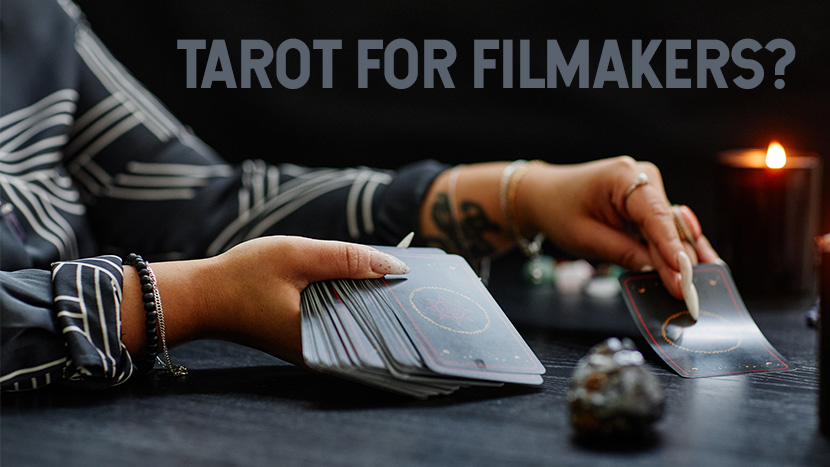Through the Lens of Destiny: How Tarot Card Reading Can Influence Cinematic Storytelling
Cinematic storytelling is an intricate dance of narrative elements, visual aesthetics, and emotional resonance. Filmmakers continually seek innovative ways to captivate audiences and infuse their works with depth and symbolism.
One unconventional source of inspiration that has found its way into filmmaking is the ancient practice of tarot card reading. This esoteric tool, often associated with divination and self-discovery, can be a powerful muse for filmmakers, adding layers of meaning and unpredictability to their narratives.
The Art of Tarot Card Reading: A Brief Overview
Tarot card reading is a centuries-old practice that involves using a deck of cards, each with its unique symbolism and meaning. Traditionally used for divination and gaining insights into the past, present, and future, tarot cards are shuffled and drawn in a specific layout called a spread. Each card represents different aspects of life, emotions, and archetypal forces, making tarot a versatile and evocative tool.
Tarot Cards in Cinematic Storytelling
1. Archetypal Characters and Motifs:
Filmmakers often turn to tarot cards to explore archetypal characters and motifs that can resonate with audiences on a subconscious level. The Fool, The Lovers, The Magician – these archetypes can inspire characters and plotlines, creating a narrative that taps into universal themes and emotions.
2. Narrative Structure:
Tarot cards, when used as a storytelling device, can influence the structure of a narrative. The cards drawn in a particular order can serve as prompts for plot twists, character development, or changes in tone. The sequential nature of the cards aligns with the three-act structure commonly used in filmmaking.
3. Symbolic Imagery:
The rich symbolism of tarot cards can inspire filmmakers to incorporate visually striking and symbolically potent imagery into their films. From the enigmatic High Priestess to the transformative Death card, the visual language of tarot can add layers of meaning to the cinematography and overall aesthetics of a film.
4. Character Development:
Tarot cards can be used as tools for character development, guiding filmmakers in shaping the personalities, motivations, and internal conflicts of their characters. Assigning specific cards to characters can create a framework for their journey and evolution throughout the film.
5. Unpredictability and Plot Twists:
Drawing tarot cards randomly or based on the unfolding narrative can introduce an element of unpredictability to the story. Filmmakers can use this randomness to craft unexpected plot twists or character revelations, keeping the audience engaged and on the edge of their seats.
6. Emotional Resonance:
Each tarot card is associated with a range of emotions and psychological states. Filmmakers can leverage these associations to craft scenes that evoke specific emotional responses from the audience, deepening the emotional resonance of the storytelling.
Case Studies: Films Influenced by Tarot
1. “The Fountain” (2006):
Directed by Darren Aronofsky, “The Fountain” incorporates tarot symbolism to explore themes of life, death, and rebirth. The narrative structure and visual motifs are influenced by tarot cards, creating a visually stunning and emotionally profound cinematic experience.
2. “The Ninth Gate” (1999):
Roman Polanski’s “The Ninth Gate” follows a rare book dealer who becomes entangled in a supernatural mystery. The film integrates tarot imagery and symbolism, with each card serving as a clue in the protagonist’s quest for understanding.
3. “The Devil’s Advocate” (1997):
In this legal drama directed by Taylor Hackford, the character of John Milton, played by Al Pacino, is revealed to be a representation of the Devil. Tarot cards, specifically The Devil card, are subtly woven into the narrative, foreshadowing Milton’s true nature.
Challenges and Controversies:
While the integration of tarot cards into cinematic storytelling offers a unique and mystical dimension, it also presents challenges and controversies. Filmmakers must navigate the risk of misinterpretation, as tarot symbolism is subjective and can be open to various readings. Additionally, some may view the use of tarot as a gimmick rather than a genuine exploration of esoteric themes.
Conclusion: The Tapestry of Fate on Screen
In the ever-evolving filmmaking landscape, directors and writers constantly seek fresh ways to tell compelling stories. With its ancient wisdom and symbolic richness, tarot card reading provides a unique lens through which filmmakers can infuse their narratives with depth, unpredictability, and emotional resonance.
As filmmakers continue experimenting with unconventional sources of inspiration, the marriage of the best tarot card reading and cinematic storytelling offers a tempting prospect. It invites audiences to embark on a journey where the threads of fate are intricately woven into the tapestry of the narrative, leaving them with an experience that transcends the screen and lingers in the realm of the mystical.


































































































